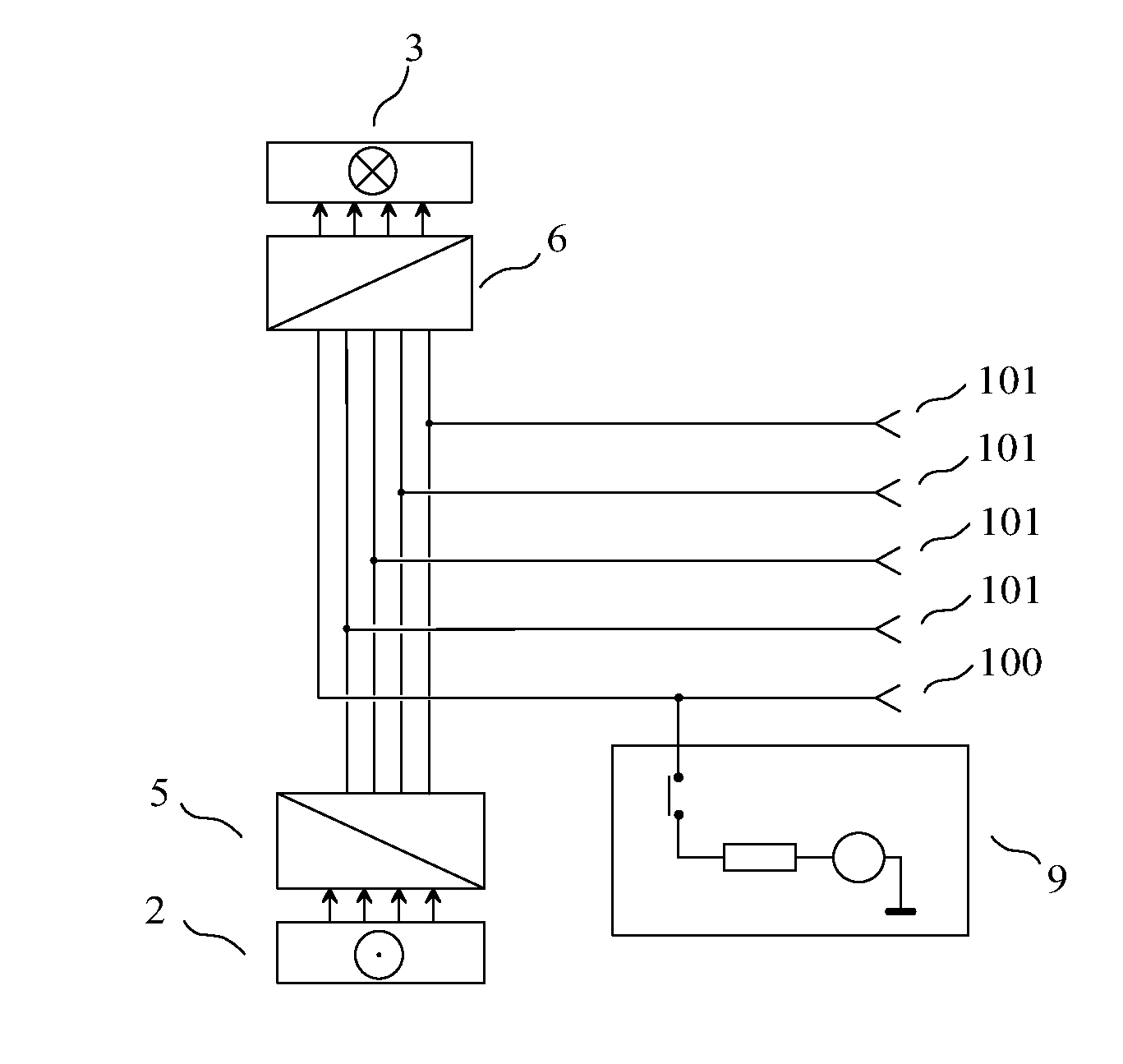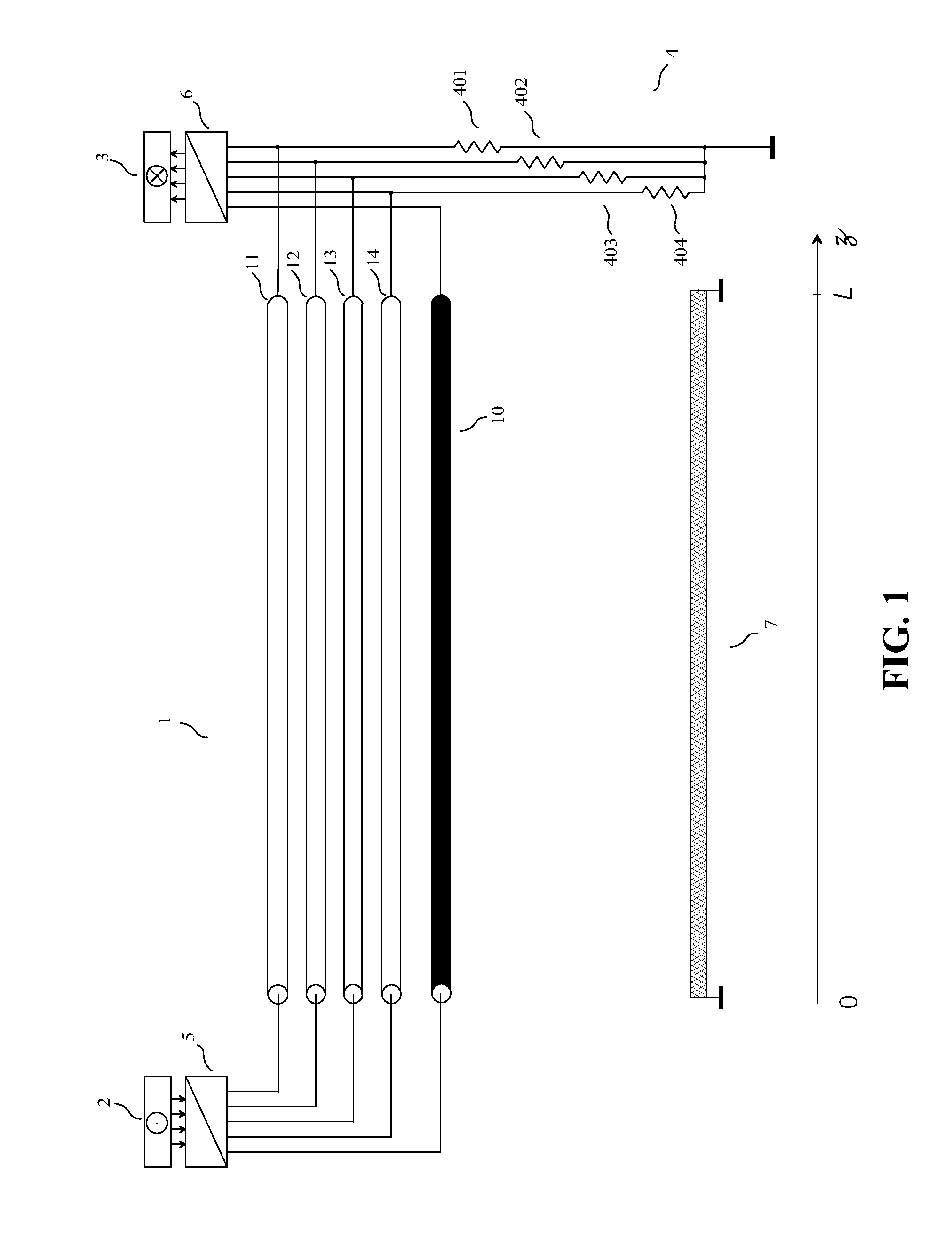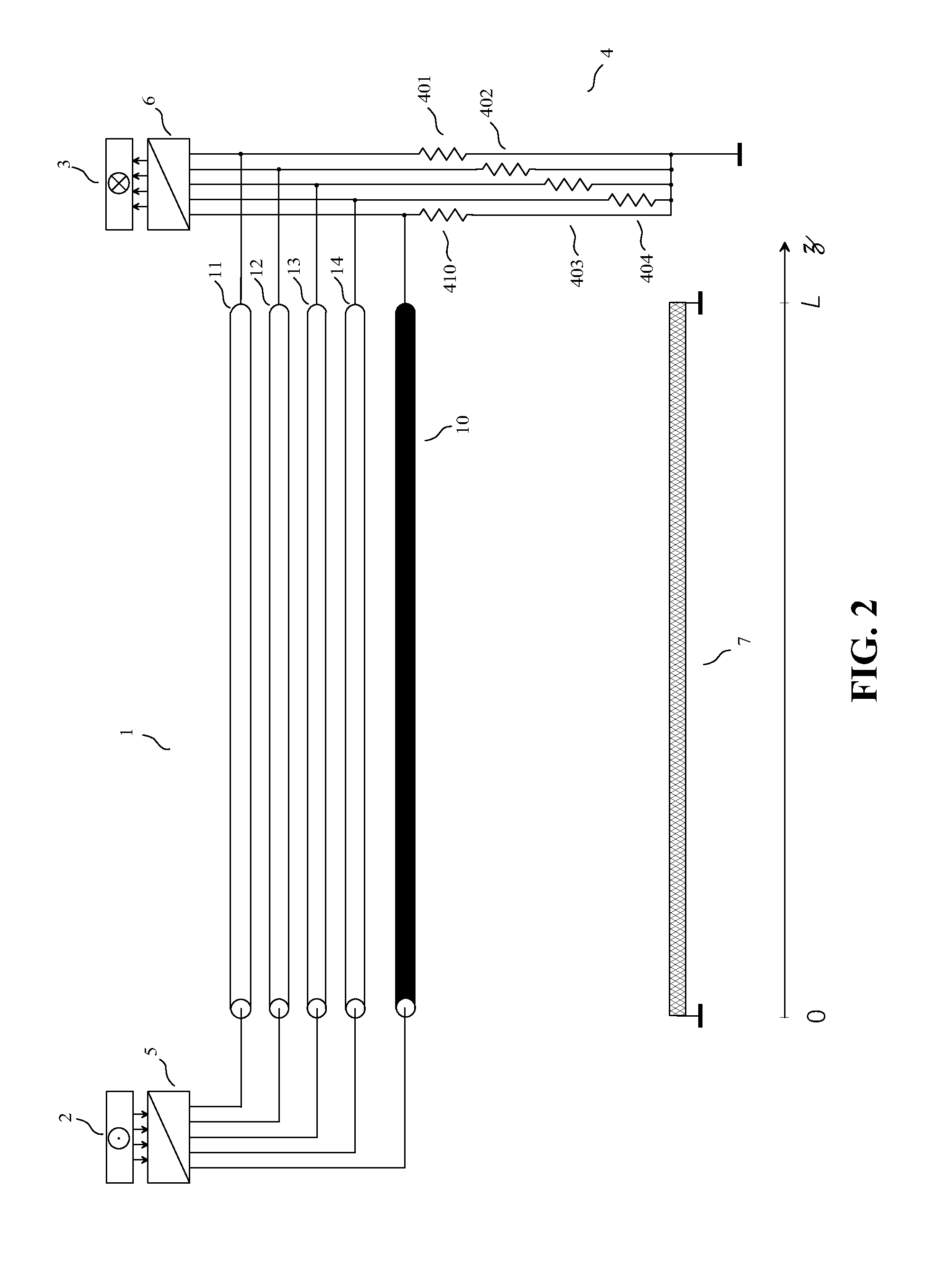Pseudo-differential interfacing device having a switching circuit
a technology of switching circuit and interfacing device, which is applied in the direction of logic circuit coupling/interface arrangement, digital transmission, pulse technique, etc., can solve the problems of affecting the performance of nearby circuits, and causing unwanted couplings
- Summary
- Abstract
- Description
- Claims
- Application Information
AI Technical Summary
Benefits of technology
Problems solved by technology
Method used
Image
Examples
first embodiment (
Best Mode)
[0096]As a first embodiment of an interfacing device of the invention, given by way of non-limiting example and best mode of carrying out the invention, we have represented in FIG. 3 an interfacing device of the invention built inside an integrated circuit, comprising m=4 signal terminals (101) and a common terminal (100), the signal terminals (101) and the common terminal (100) being intended to be connected to an interconnection having at least m+1=5 conductors.
[0097]A transmitting circuit (5) receives q=4 “input signals of the transmitting circuit” coming from a source (2), the output of the transmitting circuit being coupled to the 4 signal terminals (101). The output of the transmitting circuit is not coupled to the common terminal (100). The output of the transmitting circuit (5) delivers, when the transmitting circuit is in the activated state, q=4 transmission variables, each transmission variable being a voltage between one of said signal terminals (101) and the r...
second embodiment
[0113]The second embodiment of an interfacing device of the invention, given by way of non-limiting example, comprises:[0114]the transmitting circuit and the common terminal switching circuit shown in FIG. 5;[0115]the receiving circuit and the termination circuit shown in FIG. 7.
[0116]In the transmitting circuit and the common terminal switching circuit shown in FIG. 5:[0117]each of the q=3 “input signals of the transmitting circuit” is applied to a signal input (57) which is of the single-ended input type;[0118]each of the q=3 signal inputs (57) corresponds to a three-transistor cell made of an input transistor (511) and of a current mirror comprising two transistors (512) (513);
[0119]each of the m=3 signal terminals (101) is coupled to the drain of the output transistor (513) of the corresponding three-transistor cell;[0120]the transmitting circuit is made of the three three-transistor cells, hence of 9 transistors (511) (512) (513);[0121]a “common terminal switching signal” is ap...
third embodiment
[0139]The third embodiment of an interfacing device of the invention, given by way of non-limiting example, comprises the common terminal switching circuit shown in FIG. 6, consisting of an n-channel transistor (912) and of a p-channel transistor (913) the sources of which are connected to each other and the drains of which are connected to each other. The drains of the transistors (912) (913) are connected to the common terminal (100) and the sources of the transistors (912) (913) are grounded. This common terminal switching circuit is controlled by two control inputs: a first control input (581) for the “first common terminal switching signal” and a second control input (582) for the “second common terminal switching signal”. The specialist sees that the two transistors (912) (913) form a CMOS switch and understands that the “source” and “drain” electrodes may be exchanged in FIG. 6, when the transistors are symmetrical.
[0140]When the “first common terminal switching signal” appli...
PUM
 Login to View More
Login to View More Abstract
Description
Claims
Application Information
 Login to View More
Login to View More - R&D
- Intellectual Property
- Life Sciences
- Materials
- Tech Scout
- Unparalleled Data Quality
- Higher Quality Content
- 60% Fewer Hallucinations
Browse by: Latest US Patents, China's latest patents, Technical Efficacy Thesaurus, Application Domain, Technology Topic, Popular Technical Reports.
© 2025 PatSnap. All rights reserved.Legal|Privacy policy|Modern Slavery Act Transparency Statement|Sitemap|About US| Contact US: help@patsnap.com



